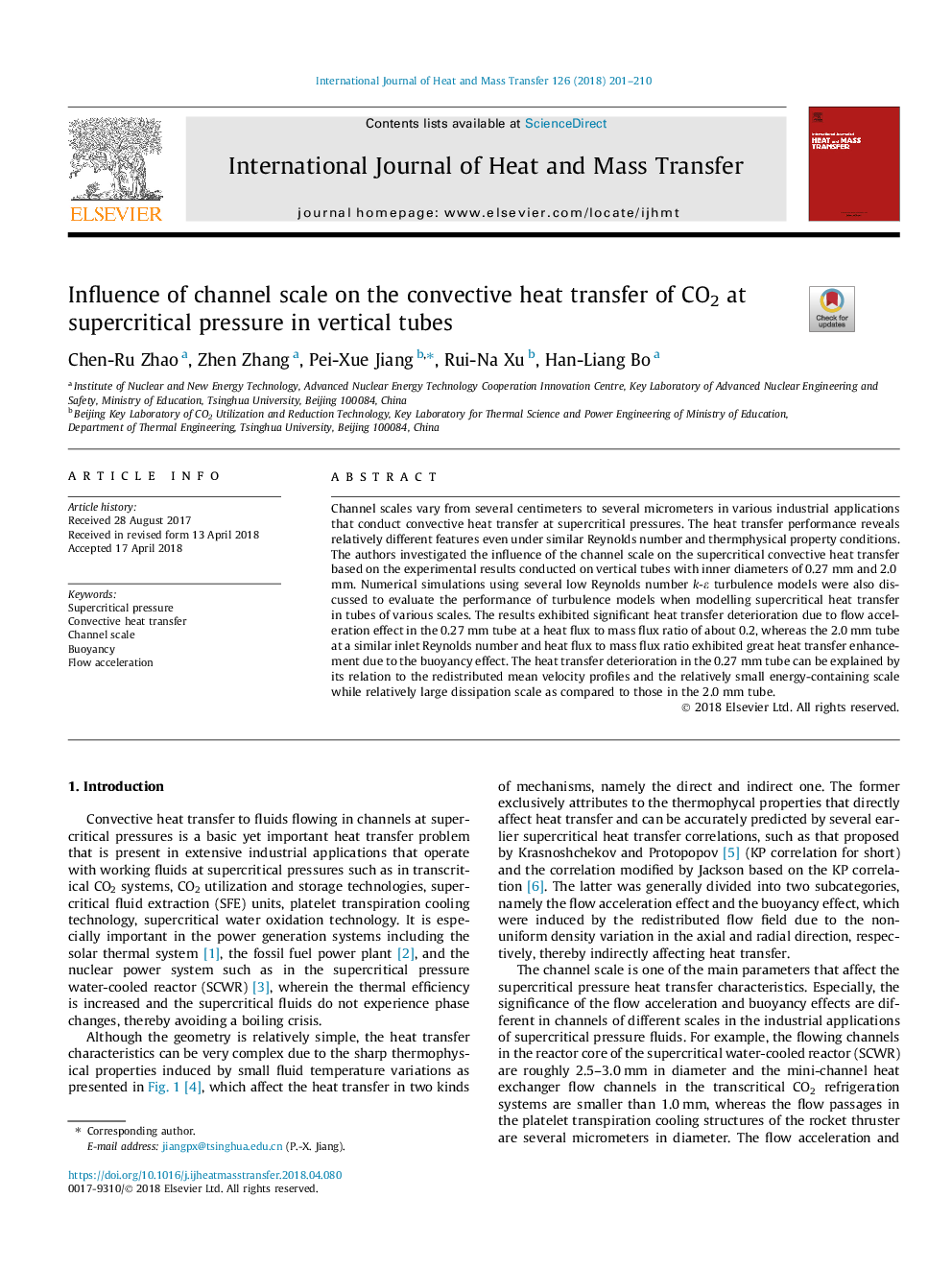| Article ID | Journal | Published Year | Pages | File Type |
|---|---|---|---|---|
| 7053964 | International Journal of Heat and Mass Transfer | 2018 | 10 Pages |
Abstract
Channel scales vary from several centimeters to several micrometers in various industrial applications that conduct convective heat transfer at supercritical pressures. The heat transfer performance reveals relatively different features even under similar Reynolds number and thermphysical property conditions. The authors investigated the influence of the channel scale on the supercritical convective heat transfer based on the experimental results conducted on vertical tubes with inner diameters of 0.27â¯mm and 2.0â¯mm. Numerical simulations using several low Reynolds number k-ε turbulence models were also discussed to evaluate the performance of turbulence models when modelling supercritical heat transfer in tubes of various scales. The results exhibited significant heat transfer deterioration due to flow acceleration effect in the 0.27â¯mm tube at a heat flux to mass flux ratio of about 0.2, whereas the 2.0â¯mm tube at a similar inlet Reynolds number and heat flux to mass flux ratio exhibited great heat transfer enhancement due to the buoyancy effect. The heat transfer deterioration in the 0.27â¯mm tube can be explained by its relation to the redistributed mean velocity profiles and the relatively small energy-containing scale while relatively large dissipation scale as compared to those in the 2.0â¯mm tube.
Related Topics
Physical Sciences and Engineering
Chemical Engineering
Fluid Flow and Transfer Processes
Authors
Chen-Ru Zhao, Zhen Zhang, Pei-Xue Jiang, Rui-Na Xu, Han-Liang Bo,
